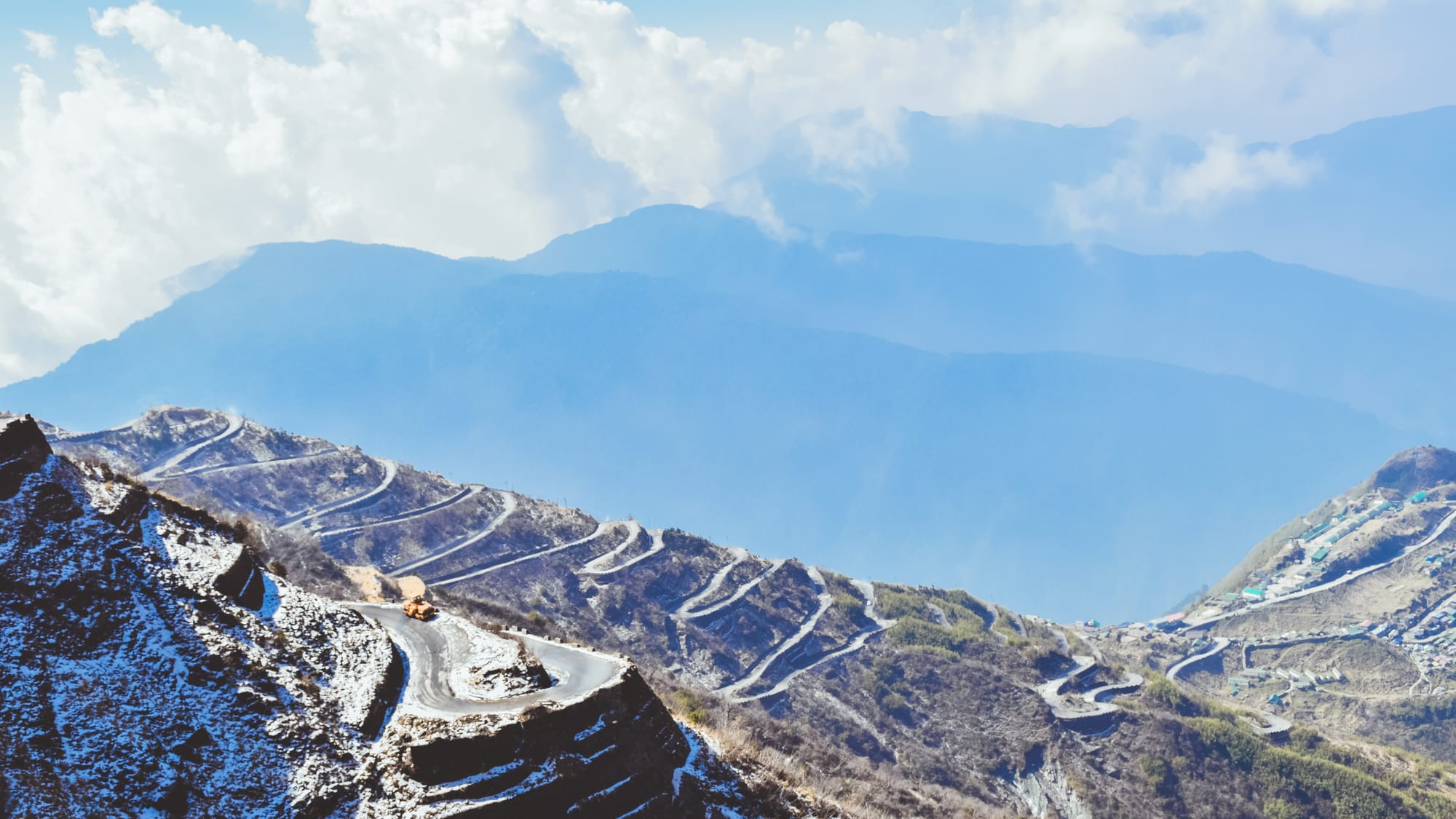Sikkim, where nature smiles, says the formula on the welcome sign at the airport exit in the heart of India, not far from the Himalayas. Others will soon take over: Keep this area clean and green. Beat plastic pollution... Slogans, only? By no means. Sikkim is distinguished from all other Indian states by a genuine ►
Sikkim, where nature smiles, says the formula on the welcome sign at the airport exit in the heart of India, not far from the Himalayas. Others will soon take over: Keep this area clean and green. Beat plastic pollution... Slogans, only? By no means. Sikkim is distinguished from all other Indian states by a genuine concern for ecology.
In Gangtok, perched at an altitude of 1,700 m on the hillside, the capital of Sikkim is crisscrossed by an infernal network of sloping streets, which winds in a narrow mesh of sharp bends. A few stairs and a cable car complete the picture. It is only possible here to go somewhere by going up or down. Even the gardens are sloping. Unique flat parenthesis, MG Marg (Mahatma Gandhi Square) stretches in the heart of this termite mound, bringing together its share of shops (anoraks, tea, trinkets) and refrigerated Indian tourists.
What to do in Gangtok? A tour between the cheese stands of the Lall Bazaar. A pout in front of the outside altar of St Thomas' Church depicting a Virgin enclosed in a Himalaya of bricks and painted stones. A pilgrimage to the Namgyal Institute of Tibetology, where Tibetan exiles have opened a museum exhibiting cups dug into human skulls (symbols of impermanence) and flutes carved into femurs, reputed to ward off ghosts and evil spirits...
A climb further to the top of yet another wooded hill, the chorten of Do Drul, surrounded by a monastic school, was also raised during a demon hunt – to believe that the region is infested with it. It is carefully circumvented by operating each of the 209 prayer wheels surrounding it. It all starts at dawn with a viewpoint of Kangchenjunga from Tashi Viewpoint, perched above Gangtok.
60 km away, the third highest peak on the planet (8,586 m) plays the stars every morning of the dry season (the top: October-November) before the clouds fly away. This is followed by a long contortionist descent to the valley of the Rate Chhu River: a superb collection of bends wrapped in humid forest, where we cross each other to the millimeter... As is often the case in Sikkim, the road is single-track. Rus pour on the tarmac (or what's left of it), which will turn during the monsoon into waterfalls and furious torrents, dragging whole swathes of a mountain into the void – sometimes, North Sikkim remains cut off from the world for several weeks.
When the enclosure is about to close, the monks return to their pews in the evening. Their throbbing songs then rise in the incense vapors, punctuated by the horns' roar and the cymbals' clash. During the Cham, the annual festivals, the heartbeat of the drums gets involved, punctuating the dances of the monks, masked or costumed as yaks. In winter, the terrifying Mahakala, protector of the divine Law, is adorned with five human skulls and is the center of attention.
Don't wait any longer and fly to this peaceful and mysterious destination. ◄
